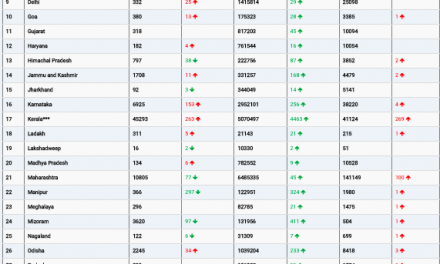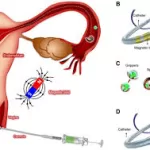Copenhagen, Denmark, 15 May 2024
Most people in the WHO European Region consume far too much salt, and more than one in three adults aged 30–79 has hypertension, the medical term for high blood pressure. This matters because high salt intake raises blood pressure, which is a leading risk factor for cardiovascular diseases such as heart attacks and strokes. A new WHO/Europe report “Action on salt and hypertension” calls for an integrated approach to reduce salt intake and improve detection and control of hypertension to protect people’s health.
Dying early from cardiovascular diseases: alarming statistics
Cardiovascular diseases (CVDs) are the predominant cause of disability and premature death in the European Region, causing over 42.5% of all deaths annually. That means 10 000 deaths every day.
According to the WHO/Europe report, men in the Region are almost 2.5 times more likely to die from CVDs than women. There is also a geographic divide – the probability of dying young (30–69 years) from a CVD is nearly five times as high in eastern Europe and central Asia compared to western Europe.
“CVDs and hypertension are largely preventable – and controllable,” said Dr Hans Henri P. Kluge, WHO Regional Director for Europe. “Four million, a staggering figure, is the number of deaths caused by cardiovascular diseases every single year – primarily in men, particularly in the eastern part of our WHO region. These are the facts, but this is something we can change. We know what works, but time and time again, we fall short of implementing evidence-based approaches, resulting in unacceptably high levels of avoidable deaths. Implementing targeted policies to reduce salt intake by 25% could save an estimated 900 000 lives from CVDs by 2030.”
High salt consumption: a major health threat for the Region
Almost all countries in the European Region (51 of 53) have an average daily salt intake above the WHO recommended maximum level of 5 g (around one teaspoon) per day.
Excessive salt consumption is the main driver of hypertension and, subsequently, deaths from heart attacks, strokes and other CVDs. Street food and processed foods are often the main culprits.
Regulating the amount of salt in processed foods has the potential to have a positive impact on people’s health.
High blood pressure: a silent killer
High blood pressure is the leading risk factor for death and disability in the European Region, causing almost a quarter of deaths and 13% of disability. It usually has no symptoms, and if it remains uncontrolled it can have potentially devastating consequences such as heart attacks and strokes. The European Region has the highest blood pressure prevalence in the world.
An integrated approach: reducing salt intake and controlling hypertension
The new WHO/Europe report promotes an integrated approach to reduce salt intake and better control hypertension levels. These measures can save thousands of lives every day across the European Region. We know what works, and evidence-based interventions and tools that reduce salt intake and control hypertension are available – but many countries are not able to implement them. Decision makers can take stronger action to break these barriers and bring better health to people:
- Introduce mandatory policies to reduce salt intake. Population-level measures are needed to reduce salt intakes towards the WHO recommended maximum. This includes setting mandatory limits on the amount of salt in commonly consumed foods including manufactured foods, and foods served in food outlets and in canteens; mandatory front of pack labels to support consumers to make informed and healthier choices; and public awareness campaigns to support behaviour change to reduce salt consumption in the population.
- Resist industry opposition. Reducing salt at population level highlights the opposing fundamental interests of public health and the food industry. From the food industry’s perspective, high-salt foods tend to yield the most profit. But the fact is that these foods put customers’ health at risk. Population-level salt reduction through mandatory reformulation produces rapid results, is feasible, is cost-saving and ultimately saves lives.
- Treat hypertension effectively. Hypertension should be diagnosed and managed with standardized treatment protocols and team-based care in primary care settings. Improved access to essential medications and medical devices for those diagnosed with hypertension is crucial.
- Improve guidelines. Evidence shows that simplified, user-friendly guidelines that are relevant to local clinical situations are more likely to be put into action.
- Enhance patient knowledge. Evidence says that improving patient knowledge of hypertension, its complications and the effectiveness of treatment improves adherence to medication to treat hypertension.
- Adopt a patient-centred approach. Prioritizing what matters to the patient can also improve adherence.
- Implement gender-responsive policy. This can help to address inequalities in hypertension detection and control.
- Strengthen supply chain resilience. Enhancing supply chain resilience against emergencies ensures uninterrupted treatment.











